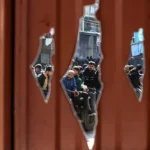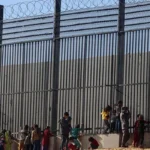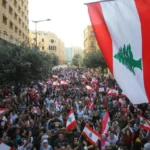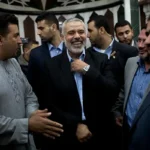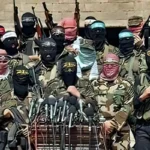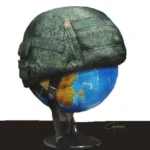Israel’s Test of Strength: Balancing Hamas, Hezbollah, and Public Opinion
The recent events in Israel have thrust the country into a complex and challenging situation. The actions of Hamas in the Gaza Strip have not only posed a serious threat to Israeli settlements but have also escalated tensions with Hezbollah in Lebanon. As a result, Israel finds itself caught in a strategic trap, facing increased threats and the potential for prolonged warfare on multiple fronts.
The Palestinian Conflict Resurfaces
For years, the Israeli-Palestinian conflict and the confrontation with Hezbollah have simmered beneath the surface. However, the recent massacre orchestrated by Hamas in the settlements surrounding the Gaza Strip has reignited these long-standing issues, pushing them to the forefront of the regional agenda. This resurgence has even inspired other extremist organizations in the region, hoping to unite and gradually dismantle Israel’s defenses.
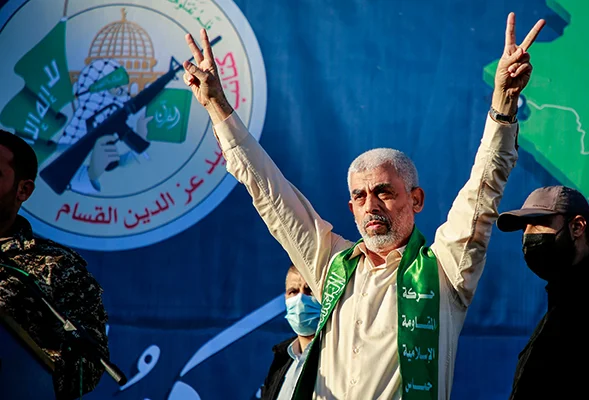
The Growing Threat of Hamas and Hezbollah
While Iran and Hezbollah have not plunged headfirst into war, as Hamas leaders in the Gaza Strip had hoped, they are actively engaging in the fight against Israel. Their involvement in the conflict has constrained significant forces of the Israel Defense Forces (IDF) in the country’s north. The vision articulated by the late General Qasem Soleimani, regarding the “ring of fire” surrounding Israel, is beginning to materialize.
Shattering Illusions
For over a decade, Israel has told itself flattering stories: Iran is transparent to Israeli intelligence (fact: Mossad stole a nuclear project archive from Tehran); the “campaign between wars” conducted by the IDF damages Hezbollah’s arms and leaves Iran and its allies helpless; every round of fighting in the Gaza Strip ends with Israel’s overwhelming advantage and weakens Hamas; on the West Bank, if a Palestinian dreams of a terrorist attack at night, the Shin Bet appears at his doorstep in the morning and arrests him.
However, these illusions were shattered with a deafening bang during the Simchat Torah holiday in the border area adjacent to the Gaza Strip. Israel’s achievements in the Gaza Strip over the course of 12 weeks of combat should not be underestimated. Israel possesses a clear advantage in firepower, technology, intelligence, and the integration of these elements. The combat spirit and professionalism of IDF commanders and soldiers, along with extensive American support, give the IDF an edge wherever it directly confronts Hamas. In almost every encounter, Hamas suffers disproportionately greater losses compared to the IDF.
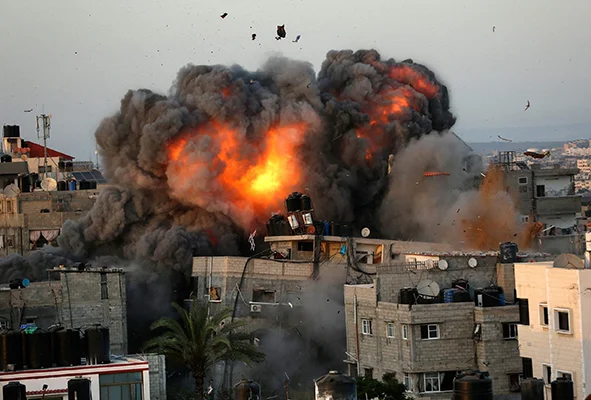
Assessing Casualties and the Underground Challenge
Nevertheless, it is essential to approach the counting of terrorists killed by Israel with caution. While there is talk of 8,000 terrorists eliminated, intelligence reports indicate that these figures are based on “medium-level reliability.” In other words, it is entirely possible that the IDF is falling into the trap of overestimating the enemy’s casualties, a pitfall the US military suffered during the Vietnam War.
The current situation in Gaza differs from previous conflicts. It is not just the dense urban landscape that presents a challenge but also Hamas’s intentional placement of its combat formations among the civilian population (soldiers report that weapons were found in every other house). The decisive factor for Hamas lies in the underground space. The tunnel system has proven to be infinitely more complex and powerful than anything the intelligence community knew before the war.
Hamas’s Preparation and Israel’s Response
Hamas leader Yahya Sinwar, in the 12 years since his release from an Israeli prison as part of the Shalit deal, has not spent money on youth orchestras in Jabalia or tennis centers in Khan Yunis. Every shekel has been directed toward strengthening military capabilities and preparing for war with Israel. The billions transferred by Qatar to the Gaza Strip were primarily used for these purposes, or at the very least, provided Hamas with the resources to enhance its military power.
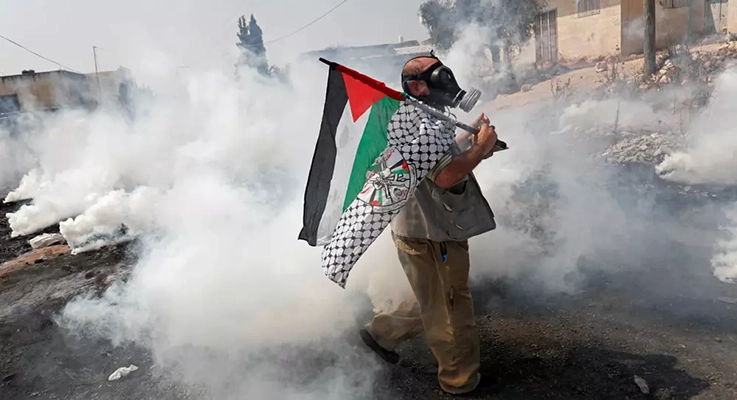
Israel’s extensive and rapid ground maneuver in Gaza caught Hamas by surprise. However, the significant damage inflicted on Hamas battalions in the northern part of the Gaza Strip did not prevent the organization from continuing to fight with what it had left. Instead of using platoons and companies, small squads were deployed, fighters emerged from tunnel shafts, attacked Israeli forces, and quickly retreated.
The Third Phase
The IDF relies on the accumulation of gradual and incremental achievements to ultimately crush Hamas’s military potential. The destruction of more and more tunnels, shafts, terrorists, and weapons will eventually lead to the collapse of Hamas’s military capabilities. However, an essential factor in this equation is Israeli public opinion. With growing concerns over increasing casualties, citizens are gradually losing their admiration for the achievements, despite the IDF spokesperson’s enthusiastic reports on the latest operations by various brigades.
These doubts are compounded by additional challenges, such as the need to retain a significant amount of weaponry in preparation for an intense war with Hezbollah in the north, the prolonged strain on the reserve system, economic pressures, and psychological fatigue among the soldiers in Gaza. The accumulation of these circumstances strengthens the support for a change in the mode of operations, including within the General Staff. For over a month, Israeli security forces and the US administration have been discussing a transition to the so-called third phase.
This phase entails the establishment of a narrow security perimeter within the Gaza Strip, the maintenance of a buffer zone between the northern and southern parts (a contentious issue to date), a reduction in forces, the release of reservists, and a shift towards brigade-level raids against the remaining Hamas strongholds.
When Chief of the General Staff Aviv Kochavi made a brief statement earlier this week, it was possible to discern the overall direction. There are no magical solutions or shortcuts, he said. “We will reach the Hamas leadership, whether it takes a week or months.” In other words, the IDF intends to operate for an extended period, with varying degrees of intensity.
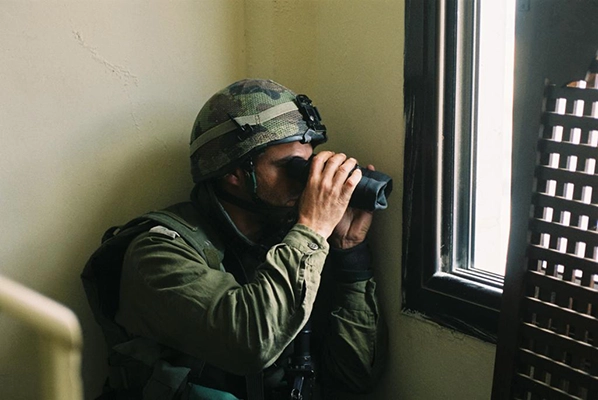
Drawing Lessons from “Operation Defensive Shield”
Supporters of transitioning to a new phase often cite the precedent of “Operation Defensive Shield.” The 2002 operation, during the height of the second intifada, led to a reduction in Palestinian terrorism on the West Bank. However, the goal was not achieved during the operation itself, which involved five divisions, but in the subsequent two years through hundreds of smaller-scale operations that gradually eroded the enemy’s forces.
The circumstances in the Gaza Strip are more complex, and the trend towards reducing offensive forces is driven by both a sense that the current format has exhausted itself and doubts about the long-term resilience of Israeli society and its ability to withstand challenges.
As Israel navigates its way through the complex geopolitical landscape, balancing the threats posed by Hamas and Hezbollah while managing public opinion becomes increasingly crucial. The country’s response must be multifaceted, combining military strength, strategic planning, and effective communication to address the challenges at hand. Only by doing so can Israel maintain its position of strength and security in the region.





